Book Review: “The Sugar Merchant” Series by James Hutson-Wiley
Introduction
Very few books exist that take me completely by surprise. And yet, sometimes surprised I am! I read the first book in The Sugar Merchant series for a client a few months after its publication, and the story blew me away. Author James Hutson-Wiley, whose background in international trade and project finance clearly presents itself in his works, traces the lives of his protagonist Thomas Woodward and his son as they maneuver their ways through the economic and religious turmoil of eleventh- and twelfth-century Europe and Africa in a bid to make a good life for themselves and fulfill their personal missions.
Set against the backdrops of the Silk Road and the Second Crusade, The Sugar Merchant series explores the intersection of commerce and religion and how people from various backgrounds rose and fall during such a chaotically fascinating time.
Historical Context
Historians have waxed at length about both the Silk Road and the Crusades. For the sake of brevity, I’ve added a little about each topic. Otherwise, this review would easily turn into a long treatise that would only bore you! I’ve also added links to additional resources for further reading.
The Silk Road
The Silk Road represents not just a network of Eurasian trading routes used to exchange goods such as the eponymous silk, spices, precious metal and gems, raw materials, food, and much more. It also references the “widespread transmission of knowledge, ideas, cultures and beliefs”, according to UNESCO.1“About the Silk Roads,” UNESCO, https://en.unesco.org/silkroad/about-silk-roads (accessed November 15, 2021). UNESCO neatly sums up how the Silk Road enhanced the more intangible trade that occurred along its routes:
Travellers along the Silk Roads were attracted not only by trade but also by the intellectual and cultural exchange taking place in cities along the Silk Roads, many of which developed into hubs of culture and learning. Science, arts and literature, as well as crafts and technologies were thus shared and disseminated into societies along the lengths of these routes, and in this way, languages, religions, and cultures developed and influenced one another.
“About the Silk Roads,” UNESCO, https://en.unesco.org/silkroad/about-silk-roads (accessed November 15, 2021).
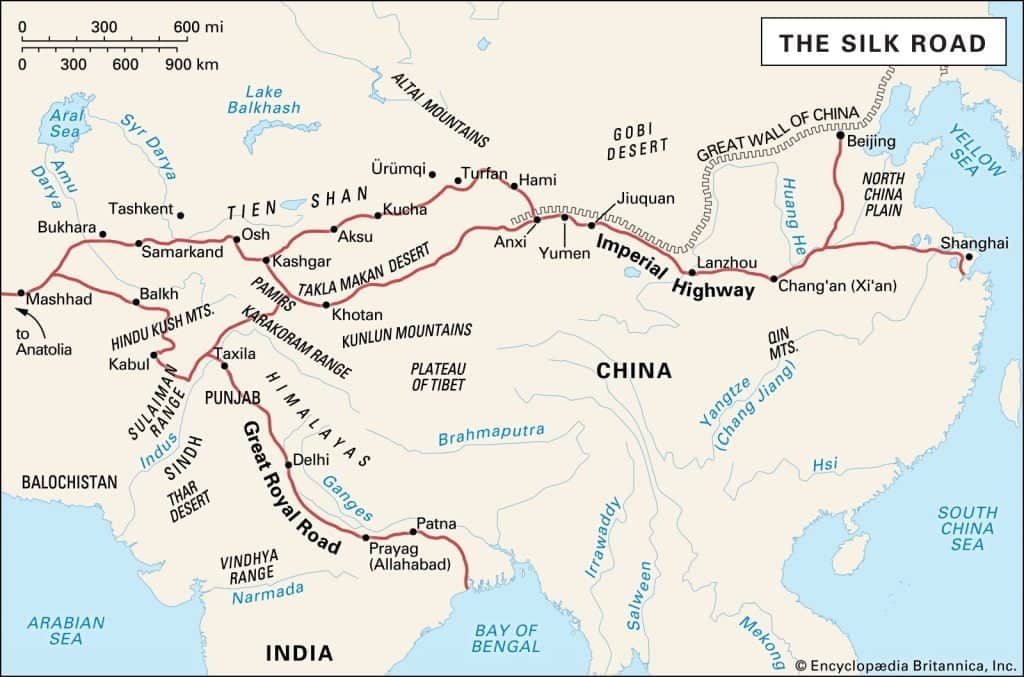
People around the world sought to take advantage of these exchanges. Silk, of course, proved one of the most valuable commodities. Western Europe, however, desired more than just materials, however. It also wanted knowledge, including medical texts that were previously unavailable to Western society due to geopolitical and religious considerations. The opening up of trade routes, though, helped to bring these texts into the hands of monks, easily among the most educated people in Europe. The Sugar Merchant draws on and explains this history in much greater detail than I could give here.
For further reading:
- “About the Silk Roads,” UNESCO, https://en.unesco.org/silkroad/about-silk-roads.
- Richard Kurin, “The Silk Road: Connecting People and Cultures,” https://festival.si.edu/2002/the-silk-road/the-silk-road-connecting-peoples-and-cultures/smithsonian.
- Daniel C. Waugh, “The Silk Roads in History,” Penn Museum, https://www.penn.museum/documents/publications/expedition/PDFs/52-3/waugh.pdf.
The Second Crusade
The Pope’s Edict
Pope Eugene III issued this edict on December 1, 1145 after the fall of the Crusader state of Edessa (in modern-day Turkey) to Muslim forces in December 1144. This launched the Second Crusade (1147-1150).
Bishop Eugene, servant of the servants of God, to his most beloved son in Christ, Louis, the illustrious king of the French, and to his beloved sons, the princes, and to all the faithful ones of God who are established throughout Gaul,-greeting and apostolic benediction…
We exhort therefore all of you in God, we ask and command, and, for the remission of sins enjoin: that those who are of God, and, above all, the greater men and the nobles do manfully gird themselves; and that you strive so to oppose the multitude of the infidels, who rejoice at the time in a victory gained over us, and so to defend the oriental church -freed from their tyranny by so great an outpouring of the blood of your fathers, as we have said, – and to snatch many thousands of your captive brothers from their hands,- that the dignity of the Christian name may be increased in your time, and that your valour which is praised throughout the whole world, may remain intact and unshaken.
Pope Eugene III, “Summons to a Crusade,” December 1, 1145, Internet Medieval Sourcebook, ed. Paul Halsall, from Doeberl, Monumenta Germania Selecta, Vol 4, p. 40, trans in Ernest F. Henderson, Select Historical Documents of the Middle Ages (London: George Bell and Sons, 1910), pp. 333-336, https://sourcebooks.fordham.edu/source/eugene3-2cde.asp (accessed December 8, 2021).
Brief Overview of the Second Crusade
According to the Encyclopedia Britannica, the Second Crusade had three objectives:
- The restoration of Edessa
- Fighting Muslims in Spain
- Fighting the pagan Wends on the Baltic Sea2Britannica, T. Information Architects of Encyclopaedia, “Crusades,” Encyclopedia Britannica, December 13, 2021, https://www.britannica.com/facts/Crusades.
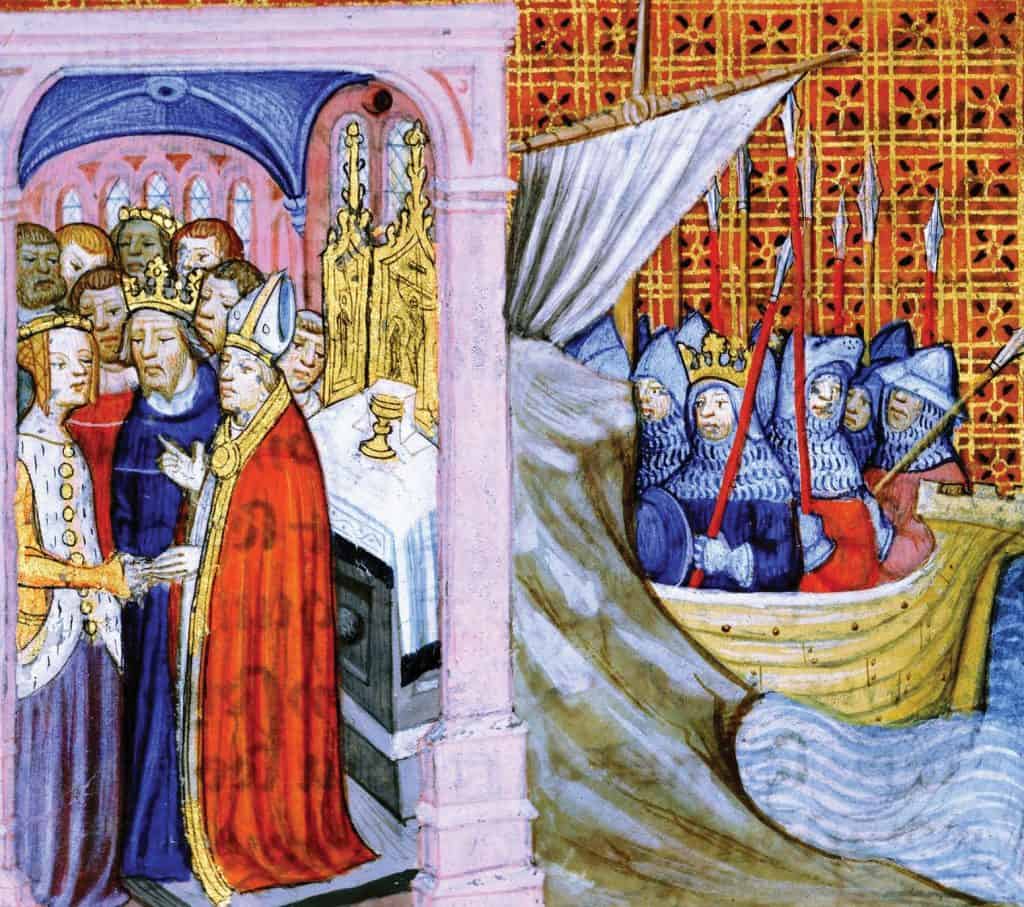
Many rallied to the Crusader banners, led by the French king Louis VII and his wife Eleanor of Aquitaine and Emperor Conrad III of Germany. After a complex series of events, better described in the Encyclopedia Britannica, Edessa remained in Muslim control, the Spanish Crusaders secured some Christian victories, and the Wend crusade ended up as something of a stalemate. In the East, geopolitical maneuvering resulted in in-fighting. This ultimately led to Muslim victories that preceded the events of the Third Crusade.
Synopsis
The Sugar Merchant series currently comprises two books: The Sugar Merchant and The Travels of ibn Thomas. I have not seen any hints of a third book. My guess is, then, that the author only planned two books for this series.
The Sugar Merchant Synopsis
The Sugar Merchant follows the life of one Thomas Woodward. As a child, Thomas is brought to the fictional abbey at Eynsham after the death of his family in a rebel attack. They take him in, and he anticipates joining the order of monks as he gets older. The order, however, has other plans for him. The monks educate him in trade, arithmetic, languages, reading, writing, and defensive combat. But to what end?
As Thomas gets older, he is tasked with establishing a successful trade venture, locating documents to be transcribed by the abbey, and serving as a papal spy. He starts out small, purchasing spices and other raw goods, finding sugar is the most profitable. Eventually, the main part of the book focuses on him setting up an effective supply chain from producer to consumer. Along the way, Thomas meets two people who become his partners: Assad, the son of a Muslim trader, and Jusuf, a Jewish man with strong banking ties. These relationships form the crux of his slow but sure success across Spain and, subsequently, Egypt.
Over time, Thomas must contend with serving two masters: God and trade. Readers see this struggle – as his mercantile fortunes rise, Thomas remembers to fulfill his mission to the Church only sparingly. He chooses to focus on his business and later on, establishing a family. The sudden death of his wife, however, makes him realize he’s focused too much on serving the master of trade. In an effort to regain the Church’s favor, his Eynsham contact tasks him with one final mission: assisting the emperor Alexios with invading Jerusalem in the First Crusade.
The Travels of ibn Thomas Synopsis
The Travels of ibn Thomas centers on the story of Thoma, Thomas Woodward’s son. Born in Egypt to Thomas and his wife Zahra but raised in England, Thoma has lived a relatively privileged life as the result of his father’s wealth. He’s sent to a prestigious medical school in Salerno, and he ultimately becomes the court physician for Roger II of Sicily. Thoma’s other intrigues include his capture by pirates, his subsequent escape with an assassin, and his involvement in social and religious upheaval as a result of the First Crusade.
In addition to his profession, Thoma travels to find his father. Thomas’s fate is left unknown at the end of The Sugar Merchant. Therefore, his son desires to learn his fate.
Review
Overall, I recommend James Hutson-Wiley’s The Sugar Merchant series. I appreciated his attention to historical detail, especially for those unfamiliar with the time periods. He breathes life into these far-gone eras, seamlessly blending historical fact and fiction into a mesmerizing tapestry. The social, political, and religious struggles don’t fade into the background. Rather, the characters interact and react to these struggles, and they inform their own personal journeys and development.
What I really appreciated was the intersection of the Abrahamic faiths: Christianity, Judaism, and Islam. Though I do not consider myself an expert on these religions, I get the sense Hutson-Wiley has done his due diligence in respectively representing them in a historical context. The partnership of Thomas Woodward, Assad, and Jusuf reminds readers that those of differing faiths often peacefully interacted and worked together. This certainly stands in contrast to the religious Crusades fought in the medieval era.
Admittedly, I found The Sugar Merchant more enjoyable than The Travels of ibn Thomas. Thoma often comes across as a spoiled child without much character development, even as an adult. He supposedly learns lessons, but the author fails to offer convincing internal dialogue to sufficiently demonstrate this. Despite this, The Sugar Merchant series remains one of my firm favorites!
Book Summary
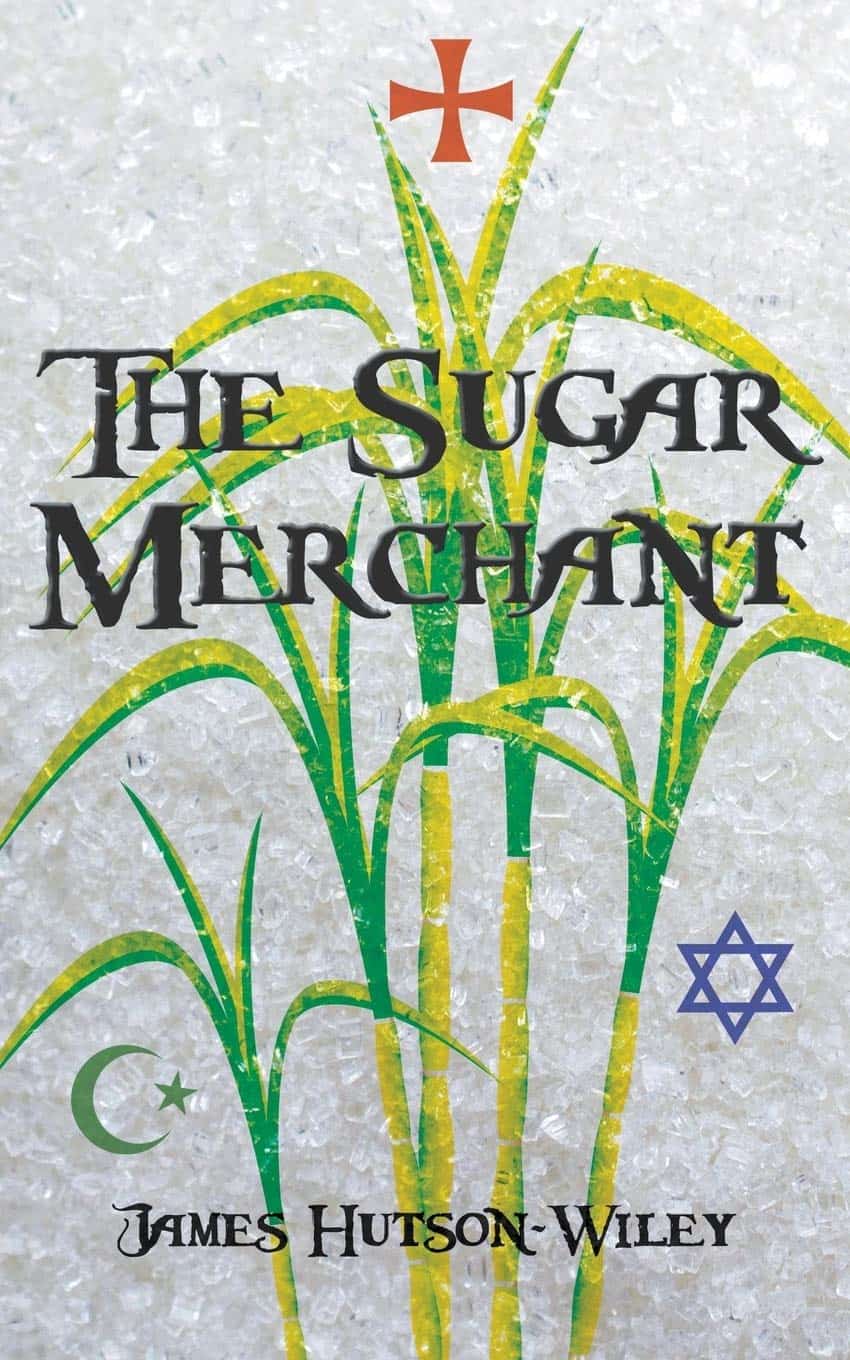
Title: The Sugar Merchant
Author: James Hutson-Wiley
Publisher: New Generation Publishing
Publication Year: 2018
Page Count: 259pp (eBook count); 378pp (print count)
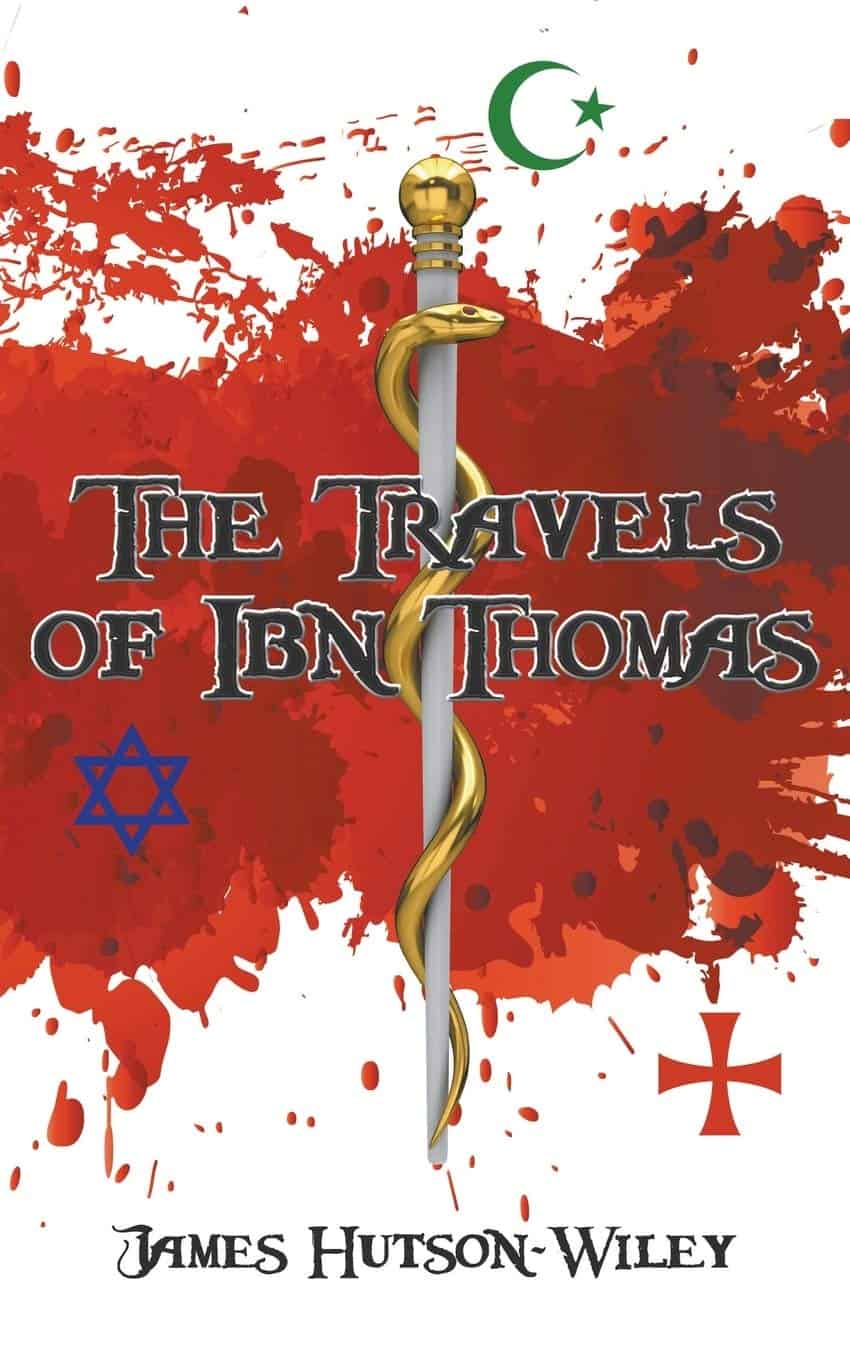
Title: The Travels of ibn Thomas
Author: James Hutson-Wiley
Publisher: New Generation Publishing
Publication Year: 2020
Page Count: 239pp (eBook count); 352pp (print count)

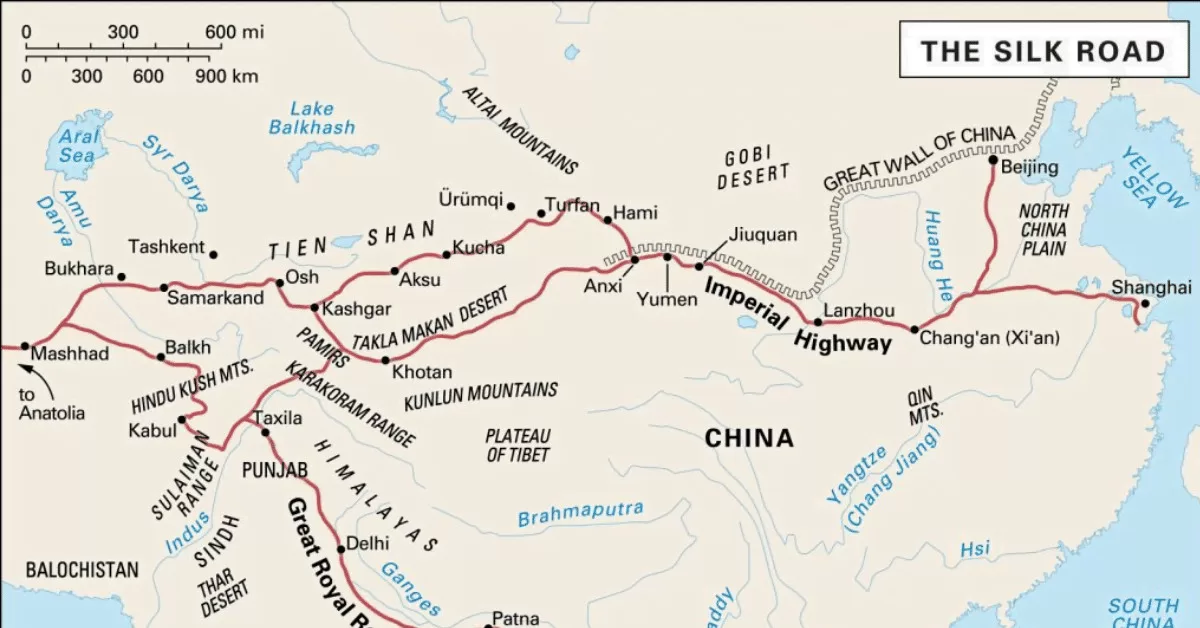
One Comment